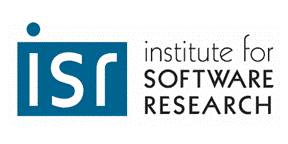
Institute for Software Research
School of Computer Science, Carnegie Mellon University
Software Architecture Evolution
Jeffrey M. Barnes
December 2013
Ph.D. Thesis
Many software systems eventually undergo changes to their basic architectural structure. Such changes may be prompted by new feature requests, new quality attribute requirements, changing technology, or other reasons. Whatever the causes, architecture evolution is commonplace in real-world software projects.
Today's software architects, however, have few techniques to help them plan such evolution. In particular, they have little assistance in planning alternatives, making trade-offs among these different alternatives, or applying best practices for particular domains.
To address this, we have developed an approach for assisting architects in planning and reasoning about software architecture evolution. Our approach is based on modeling and analyzing potential evolution paths that represent different ways of evolving the system. We represent an evolution path as a sequence of transitional architectural states leading from the initial architecture to the target architecture, along with evolution operators that characterize the transitions among these states. We support analysis of evolution paths through the definition and application of constraints that express rules governing the evolution of the system and evaluation functions that assess path quality. Finally, a set of these modeling elements may be grouped together into an evolution style that encapsulates a body of knowledge relevant to a particular domain of architecture evolution.
We evaluate this approach in three ways. First, we evaluate its applicability to real-world architecture evolution projects. This is accomplished through case studies of two very different software organizations. Second, we undertake a formal evaluation of the computational complexity of verifying evolution constraints. Finally, we evaluate the implementability of the approach based on our experiences developing prototype tools for software architecture evolution.
238 pages
Return to:
SCS Technical Report Collection This page maintained by reports@cs.cmu.edu
School of Computer Science